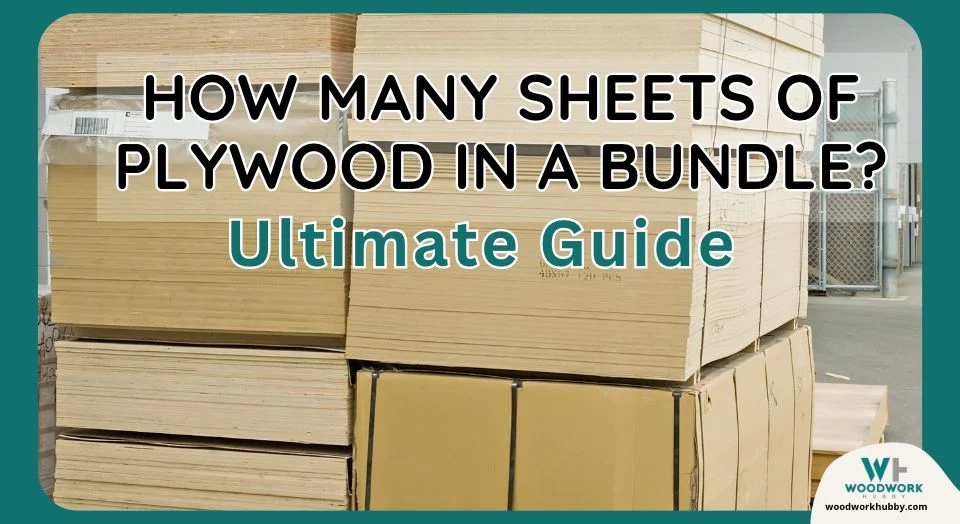Are you embarking on a woodworking project featuring plywood? Or are you interested in becoming the middleman between a supplier and a retailer? It is critical to know what to expect when you order a shipment or make a deal regarding bundles of plywood. How many sheets of plywood come in a bundle?
On average, there are 38 to 49 sheets of plywood in a bundle if you buy from the local store. If you go behind in the supply chain and connect directly with a manufacturer, you might be able to procure bunks twice the size at a much lower price.
In this article, you will learn more about plywood bundling, including what prices to expect for different types of plywood, the height and weight of a plywood bundle, and how to get the best deals on a bundle of plywood. You will also discover why trucks carrying fewer sheets will almost always charge you more.
How Many Pieces Come in a Plywood Bundle?
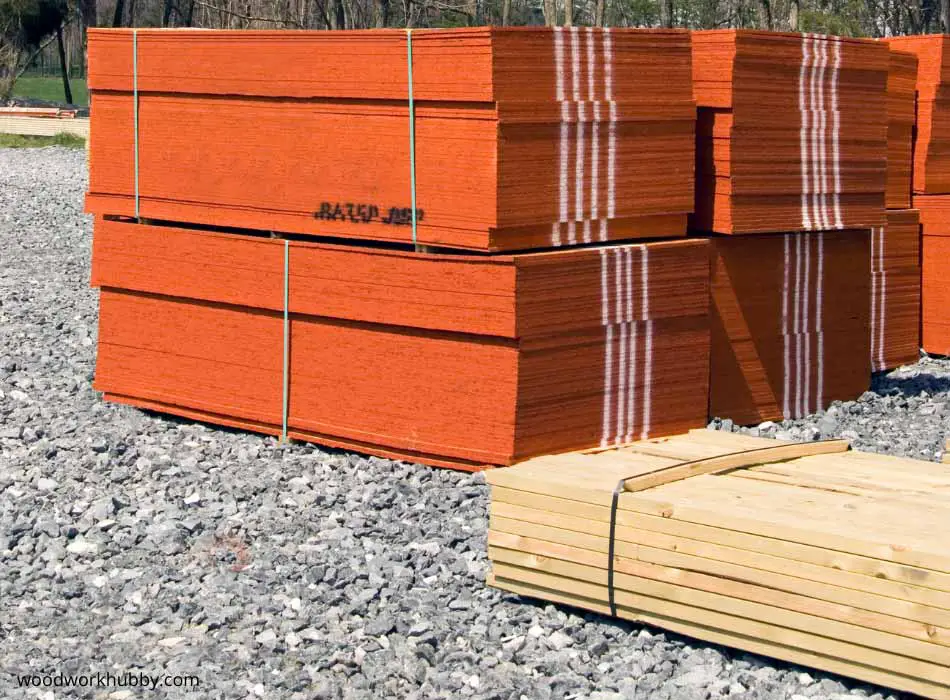
A plywood bundle usually has 49 pieces, but this number can vary if the sheet thickness changes. That’s because plywood is bundled to be easy to deliver via trucks. The trucking conventions, then, dictate what quantity of plywood goes into a bundle.
Find out how heavy is plywood with my custom tables.
Yes, 50 sheets wouldn’t make a bundle too big to ship via road. However, it will create just enough unevenness that the truck will either be overloaded upon taking more bundles or have significant space left that is too little for a 50-piece bundle. But with 49 pieces, the bundles can easily fill the truck container.
This table will help you understand how many sheets of 8×4 plywood are in a bundle.
| Plywood Thickness | No. of sheets in Bundle | Weight of bundle |
| 5/32″ (4mm) | 100 | 1,904 lbs (864kg) |
| 15/64″ (6mm) | 60 | 1,858 lbs (843kg) |
| 23/64″ (9mm) | 44 | 1,884 lbs (855kg) |
| 15/32″ (12mm) | 33 | 1,884 lbs (855kg) |
| 19/32″ (15mm) | 26 | 1,858 lbs (843kg) |
| 45/64″ (18mm) | 22 | 1,884 lbs (855kg) |
| 25/32″ (21mm) | 19 | 1,900 lbs (862kg) |
| 1″ (24mm) | 16 | 1,829 lbs (830kg) |
| 1 5/32″ (27mm) | 14 | 1,803 lbs (818kg) |
| 1 3/16″ (30mm) | 13 | 1,856 lbs (842kg) |
Volume is not as big of a restricting factor as the size of the plywood bundle because as long as the truck container can hold wood, the intermodal chassis can carry it. This, however, isn’t true for denser materials like mahogany or even reinforced lumber.
Plywood is sometimes a good alternative for woodwork benches.
Most plywood suppliers aren’t big enough operations to make trucking companies adjust their conventions. That’s why it is rare to find a bundle of plywood that is twice the quantity of a 49 piece bundle but at half the volume. Technically, this would meet the volume and collective size demands of truck conventions but would not be feasible to produce.
Companies like PlyTerra Group have a better command of the market and more control over their shipping operations. That’s why they can increase or decrease the quantity of their birch plywood pieces in each bundle.
PlyTerra Group’s birch plywood bundles feature sheets of different thicknesses. Consequently, they have bundles with 13 sheets as well as ones with 100 sheets, albeit all adding up to the same volume.
Before buying a bundle of plywood, make sure to research the manufacturer/supplier. If the supplier is sourcing from within the United States and doesn’t own the shipping operation, he is likely to ship 49 pieces per bundle at the standard sheet thickness.
Be careful while shipping plywood. See what happens when plywood gets wet!
If the manufacturer is based outside the states and the supplier has enough pull to change shipping sizes, then you should get in touch with them and discuss the exact number of pieces per bundle.
How Many Sheets Are in a Bundle?
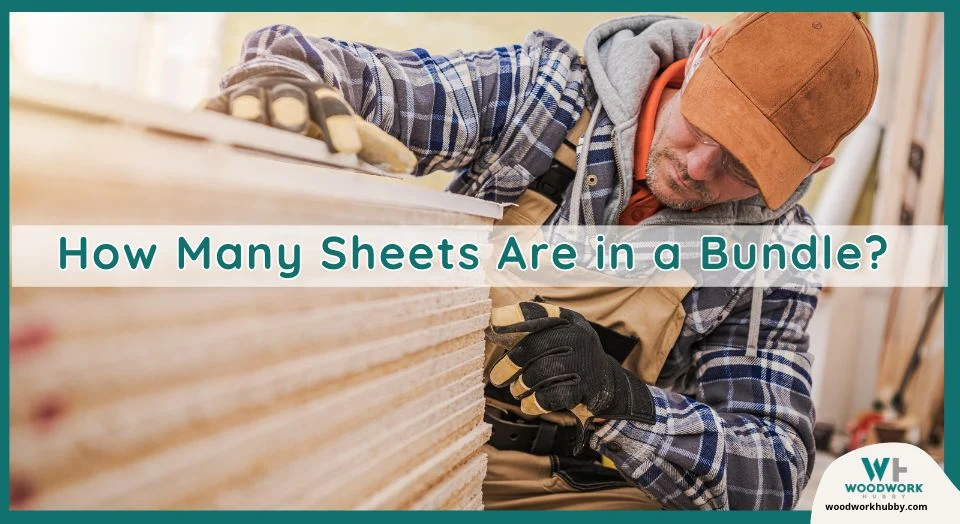
There are 49 sheets in a bundle of plywood, 48 in a bundle of MDF, 15 in a bundle of steel, and 1000 in a bundle of paper. As you can see, the quantity is material-contingent. The weight and the thickness of the material play a part in its bundling standard.
When comparing material bundles to each other, you have to keep the weight in mind. The weight of paper is much lower than the weight of steel. That explains the high number of paper sheets in a bundle.
But if you’re comparing bundling within one material type, like plywood, you have to look at thickness. That’s because plywood generally has similar if not the same density across different batches. And if the density of the material cannot vary, what can vary to explain the differences in bundling? The size.
Earlier, we covered how container limits determine plywood bundling. So when the size of the overall bundle cannot exceed a specific limit, what size can change? The size of the sheet. This brings us to the final aspect that determines along which length the sheet size changes.
Bundles are mostly based on plywood thickness.
Plywood sheets used to be irregularly sized on whatever was convenient for the supplier. After the DIY boom of the 90s, the plywood industry had to evolve to meet the demands of woodworkers building projects out of templates and blueprints. With few publishers putting out a bulk of the plywood project manuals, the templates being used relied on almost the same blueprints.
The result? 4×8 feet sheets became the unspoken standard of plywood packaging. This is convenient for the consumer but has different implications for suppliers. With plywood density and the bundle size being the same, and the width and length of the sheets practically locked at 4×8 feet, what dimension can change to account for changes in bundling quantity? The thickness.
That’s why, unless you order plywood that’s unusually thin or much sturdier than the standard, you’re going to get 49 sheets in a bundle.
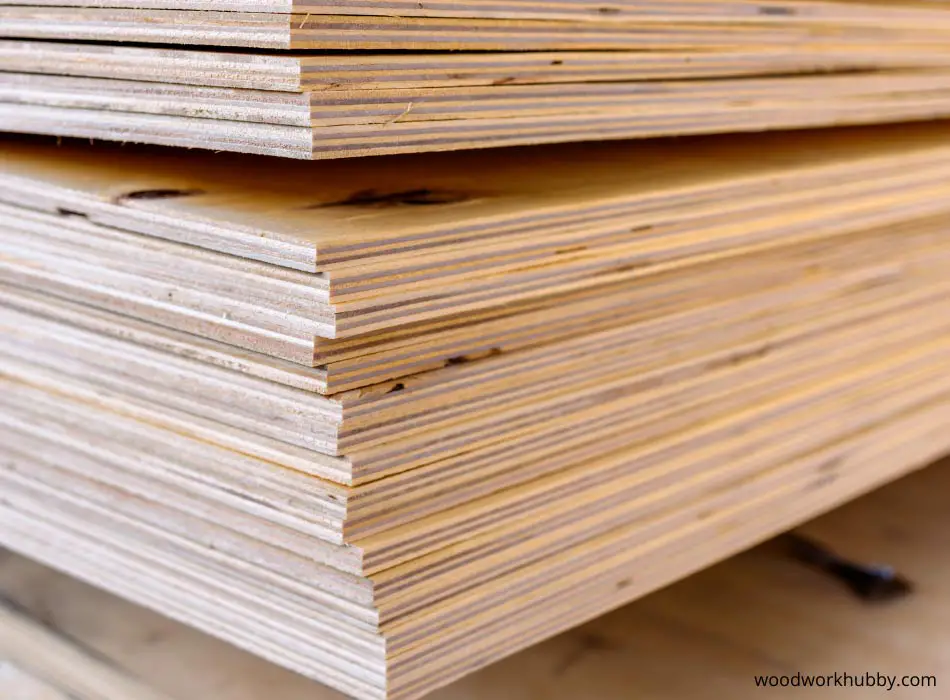
How Much Does a Stack of Plywood Cost?
A stack of plywood can cost anywhere between $293 to $1,652, depending on the type of plywood and thickness of the sheet. If the bundling were constant at 49 sheets, the most expensive sheets of plywood would result in a $2,203 bundle.
However, the bundle with thicker (more expensive) sheets has fewer pieces which is why the cost, while still higher than thinner plywood, isn’t too high per stack. Within one variety of plywood, the cost is relatively stable as the change in thickness size is offset by the number of plywood pieces.
This might make you wonder, is woodworking an expensive hobby? Check out my article with the surprising results.
Here are the different types of plywood sheets you can get
- Construction-grade OSB plywood starts at $5.97 per sheet.
- Construction Grade RTD plywood starts at $9.97 per sheet.
- Construction Grade CDX plywood starts at $28.97 per sheet.
- Cabinet Grade Sanded Pine BC plywood starting at $13.27 per sheet
- Cabinet Grade Oak Plywood starts at $25.97 per sheet
- Cabinet Grade Birch plywood starts at $41.97 per bundle
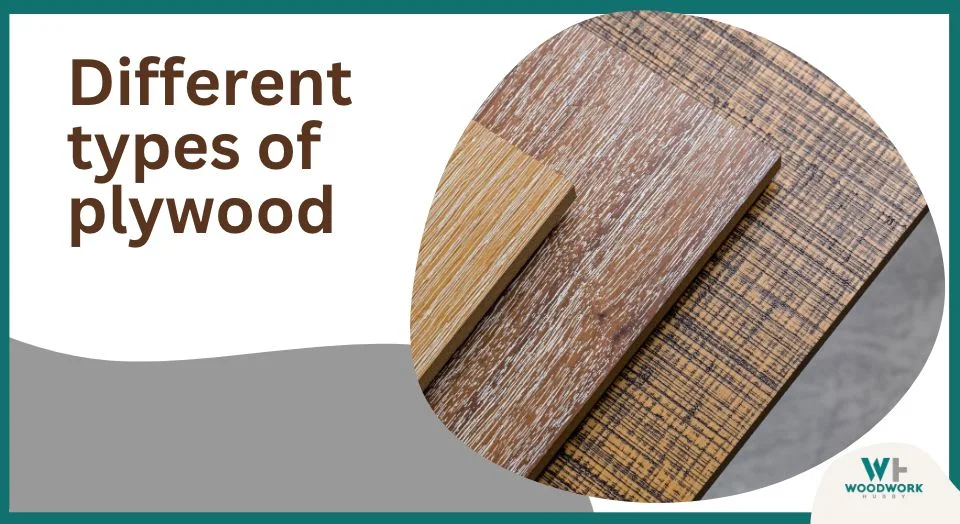
With such diverse sheet types, prices, and degrees of thickness, the universal bundle cost of plywood cannot be set at a single price. Still, you can expect to pay $300 for a bundle of thin plywood sheets.
Best Practices For Getting the Right Bundle Price
- Check with multiple suppliers to get a standard baseline price.
- Look at home depot and other retailers to understand the shop price. Do not buy from a bulk supplier unless you get 25% below the retail price. Hardware stores usually charge a minimum of 100% markup, so suppliers can afford to give you a bundle for 50% less and still make a profit.
- Look for your plywood supplier long before you need one. This reduces pressure to buy and forces the supplier to incentivize you to buy by lowering the price.
- Ask for quotes of different grades of plywood. By simply saying you want to know about construction grade and cabinet grade prices, you convey that you’re well-versed in the area and cannot be talked into paying a higher price.
- Do not mention the kind of project you need the plywood for. Finally, never mention to a supplier that you need plywood for yourself because they will default to the retail price and sell you as the final customer. If you position yourself as a potential reseller, they’ll, due to business instinct, start with a smaller ask which gives you more room to negotiate them down further.
How Many Sheets of Plywood Are on a Truck?
A truck can generally carry 49 sheets of plywood and a normal pickup truck or ute can carry 33 sheets of plywood.
The likelihood of fitting in anymore is very low. The case is different with industry trucks shipping plywood.
There are over 1260 sheets of 1/2 inch (12.7 mm) plywood on a truck that ships across state lines. The shipping container on the intermodal chassis can hold 18 packages of plywood, with each package reaching 900 millimeters in height regardless of sheet thickness or plywood quantity.
If your plywood is too long, you can always cut it down. Find out if you should use a circular saw or jigsaw to cut plywood.
Retail and supply bundling can vary. It is possible for a bundle of 70 to be broken down or a bundle of 49 sheets to be topped up by one, so it is an even 50. It is crucial to value plywood by volume and keep in mind the type of plywood you’re buying. One’s truck’s worth of plywood can be far cheaper than another truckload.
Check out my article that explains how many sheets of plywood can an F150 hold.
Do not get caught up on quantity as quantities can differ. You can expect the following quantity variations in plywood consignments:
- Up to 1369 sheets of construction-grade CDX plywood.
- Up to 1852 sheets of construction-grade RTD plywood.
- Up to 2520 sheets of construction-grade OSB plywood.
- Up to 2520 sheets of Cabinet grade Sanded Pine plywood.
- Up to 2520 sheets of Cabinet grade Birch plywood.
The differences in sheet quantity, however, do not reflect the price differences. In fact, it is likely that consignments with fewer plywood sheets will cost more. That is the case not only because thicker sheets have a markup and are of higher quality but also because you’re paying for the shipping.
Whether shipping costs are added to the invoice or not, you pay for a business to move plywood from the manufacturer to the retail destination. If a shipment comes with fewer sheets, the cost gets divided by a smaller number.
To make this simple, let’s suppose two trucks come carrying two different quantities of plywood. One has 100 sheets while the other has only 50. For simplicity’s sake, let’s assume the trucks both incur travel costs of $100.
If the business is to make that money back, the travel costs must be added to the plywood’s price. For the truck that carried 100 pieces, each piece is marked up by $1. In contrast, the truck that carried 50 pieces has to mark up each sheet by $2 to make back that money.
This principle also applies to smaller quantities moved in pick-ups and local trucks. That’s why you must be careful not to purchase broken-up consignments or in quantities any lower than you need as a shop owner or a DIY woodworker.
How Tall is a Bunk of Plywood?
If you’re looking to take a bundle of plywood in your truck, and have figured out the closing capacity issue, then the next thing you have to worry about is whether the height of the bunk will be an issue.
A bunk of plywood can go from 15 inches (381 mm) to 36 feet (10972.8 mm), the latter of which is difficult to transport on a truck even if the sheet length and width fit the truck. State laws can prohibit transporting products that stack too high.
You can break up the bunk and ship the plywood via multiple trips if you choose a supplier close enough to the project site.
What is a Bunk of Plywood?
A bunk of plywood is a collective unit of plywood that can be further split into smaller bundles. Sometimes the terms bundle and bunk are used interchangeably, whereas, in some instances, a bunk is used as a bundle of bundles.
How Heavy is a Bundle of Plywood?
A bundle of plywood weighs between 1800 – 1900 pounds though the total weight can vary depending on the type of plywood and the way it is bundled. Whether the supplier follows trucking conventions also plays a part in the final weight of the plywood.
For more detailed information, check out my article on How much does plywood weigh?
Be sure to check out my table above in this article as it outlines the different thicknesses of plywood and the expected weight of a bundle.
Conclusion – How Many Sheets of Plywood in a Bundle?
Plywood packaging and shipping vary quite drastically across different manufacturers. But by the time the planks reach public retail, they fit an average standard: they’re usually 4×8 feet and are bundled in packages of 38 to 49 sheets per bundle. Instead of fixating on the number of sheets, you must look at the total volume and the price you’re being charged per unit of volume.

